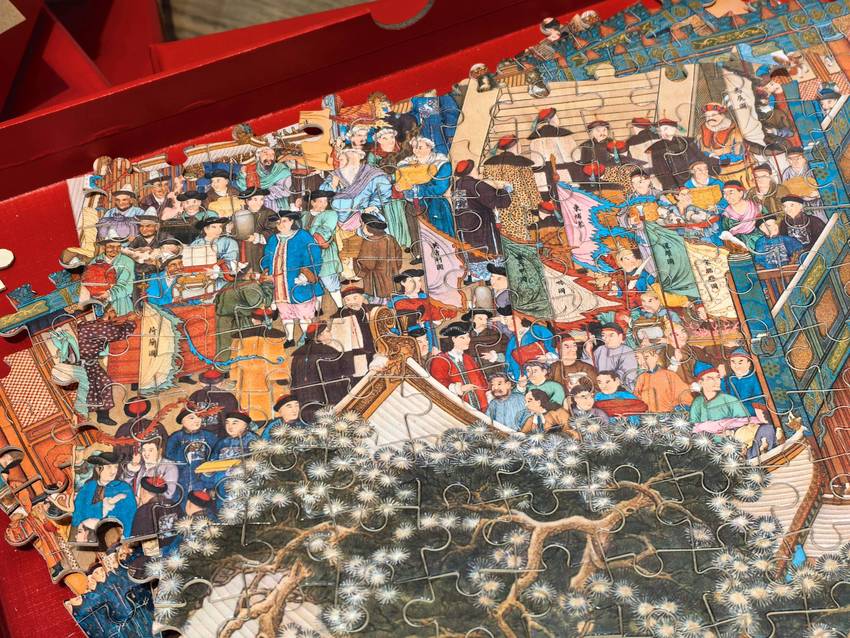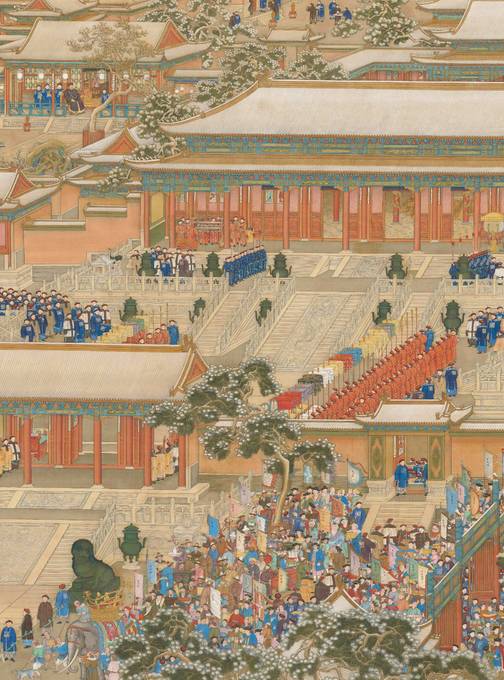


 企业认证
企业认证
 担保交易
担保交易
商品二维码

扫码购买及分享



Jigsaw Puzzle: Ten Thousand Nations Visit the Empire
价格 : ¥ 280
邮费 : ¥8.00
数量 : -1+



Jigsaw Puzzle: Ten Thousand Nations Visit the Empire
¥ 280.00
邮费: ¥8.00
浏览 : 101
商品详情
商品评价

In a Qing dynasty painting representatives of nations from all over the world, queue inside the Forbidden City waiting to pay tribute to Emperor Qianlong. Among the nations are France, England, Netherlands, Portugal, Sweden and many more. It is a scene painted to flatter the emperor and assure him of China’s superior position in the world. The painting is from around 1760 and literally called Ten Thousand Nations Come to the Empire (万国来朝图).
In the middle representatives can be seen, they are among more than 40 nations showed in the picture preparing to pay tribute to the emperor, however a gathering like this never took place as foreigners was generally only been permitted to stay around Guangzhou more than a thousand kilometers from Beijing.
However, a gathering like this never took place inside the Imperial Palace. In 1757 the Qianlong Emperor himself had by decree set up all foreign trade in Guangzhou more than a thousand kilometers away from Beijing under the so-called Cohong system. It was hereafter very difficult (often impossible) as a foreigner to get access to the capital, but even though the court painter has taken quite a bit of artistic license, the Chinese Imperial government was not delusional when it came to its role in global trade.
The Qianlong can be seen sitting comfortably in his private chambers relaxing before receiving tribute from all over the world.
In the 1760s China did hold all of the cards. Porcelain, silk and tea were commodities that China had a near monopoly on, because China was the only place that had the knowhow skill and capacity to produce these commodities at scale.
Princes can be seen lighting fire crackers in the inner most chambers of the forbidden city as the picture depicts the Imperial court celebrating Chinese New Year
In Guangzhou the Cohong system strictly limited foreign traders to do business with China on a seasonal basis. European countries were buying enormous quantities of Chinese luxury products, and by time that became a problem, because whereas the European thirst for things Chinese seemed insatiable, China did not really want anything in return but silver.
The painting is filled with symbolism and mythical creatures as the Qilin often described as the Chinese unicorn can be seen.
This made some European nations, not least the British Empire, desperate to find a way to balance out the trade deficit with China. Western trade houses now started to smuggle huge amounts of opium into the empire, prompting the direct reason for the outbreak of the Opium War in 1839, and the brutal British gunboat diplomacy that finally meant the end of the Cohong system that had dictated terms and conditions for trade with China for around a hundred years.
 加入购物车
加入购物车
 友付提供技术支持
友付提供技术支持
www.yoopay.cn
400.0697.118